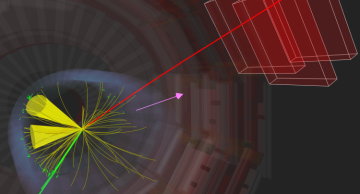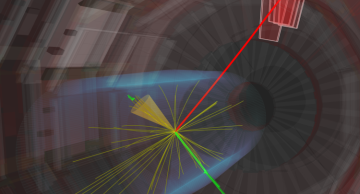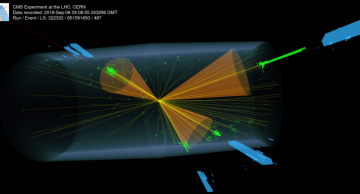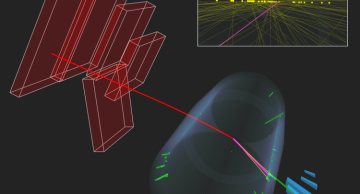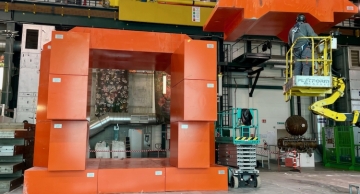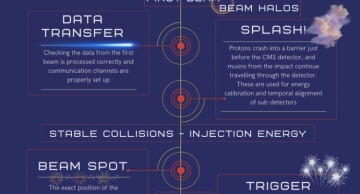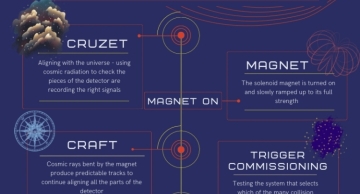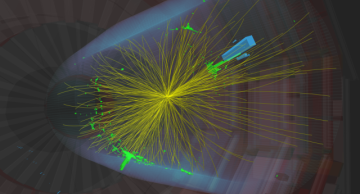The CMS experiment has just reported the observation of quantum entanglement between a top quark and a top antiquark, simultaneously produced at the LHC.
In quantum mechanics, a system is said to be entangled if its quantum state cannot be described…
News
|
ajafari |
Physics
|
ajafari |
Physics
Back in September 2022, four months after the start of the LHC Run 3, the CMS collaboration released the first measurement using data at the new collision energy of 13.6 TeV. Using the data recorded only in two months – less than 1% of the LHC goal…
|
ajafari |
Physics
Even after almost 30 years since its discovery, the top quark is still offering unprecedented opportunities to improve our understanding of nature. It is the heaviest known elementary particle and its special features help us understand the…
|
ajafari |
Physics
One of the events determined by the AI algorithm to be highly anomalous and therefore potentially coming from a new particle. The central jet shows particles clustered around two different cores within the cone, a configuration distinct from a…
|
ajafari |
Physics
In quantum electrodynamics (QED), the quantum theory of electromagnetic interactions, the magnetic dipole moment of a particle acquires quantum corrections originating from interactions with virtual photons and other particles, often referred…
|
ajafari |
Physics
The Higgs boson was one of the biggest scientific discoveries of the last decades and opened the doors to a new era for particle physics: unveiling its mysteries and measuring its properties. We already know a lot about how the Higgs boson is…
|
ajafari |
Physics
More than a decade after the discovery of the Higgs boson, we still expect this particle to give us first-hand information about theories that can solve some of the shortcomings of the standard model of particle physics (SM). For example, the…
|
sohurst |
Detector
In the same way that loud background noise does not allow us to listen to a conversation or appreciate a piece of music, so too the CMS detector needs a quiet environment to optimize data taking and analysis.
New shielding has been…
|
sohurst |
Detector
In this short series, we look at the different types of tests and steps needed for CMS to run at the precision the experiment requires.
Find part 1 here!
Part 2
First Beam Arrives
So far, the only tests and alignments that have taken place have…
|
sohurst |
Detector
It is compelling to picture large physics labs with lots of sparks and heavy levers that wake up big, important experiments with sparks and loud bangs.
Even if this were the case, CMS is too big and too complex to be started up by a simple pull of a…
|
ajafari |
Physics
Event display for a potential SUEP event, recorded at CMS in 2018, showing the characteristically high multiplicity of soft tracks in yellow.
Could there be a “dark world“ composed of invisible particles held together by a new strong dark force,…
|
ajafari |
Physics
Neutron stars, ultra-cold atomic gases, and the quark-gluon plasma… You may find them totally unrelated but, surprisingly enough, they share a common feature: a fluid-like state of matter containing strongly interacting particles! An insight into…

